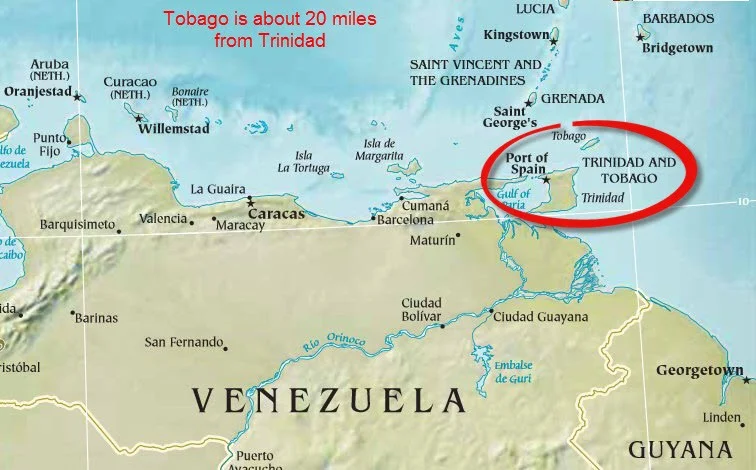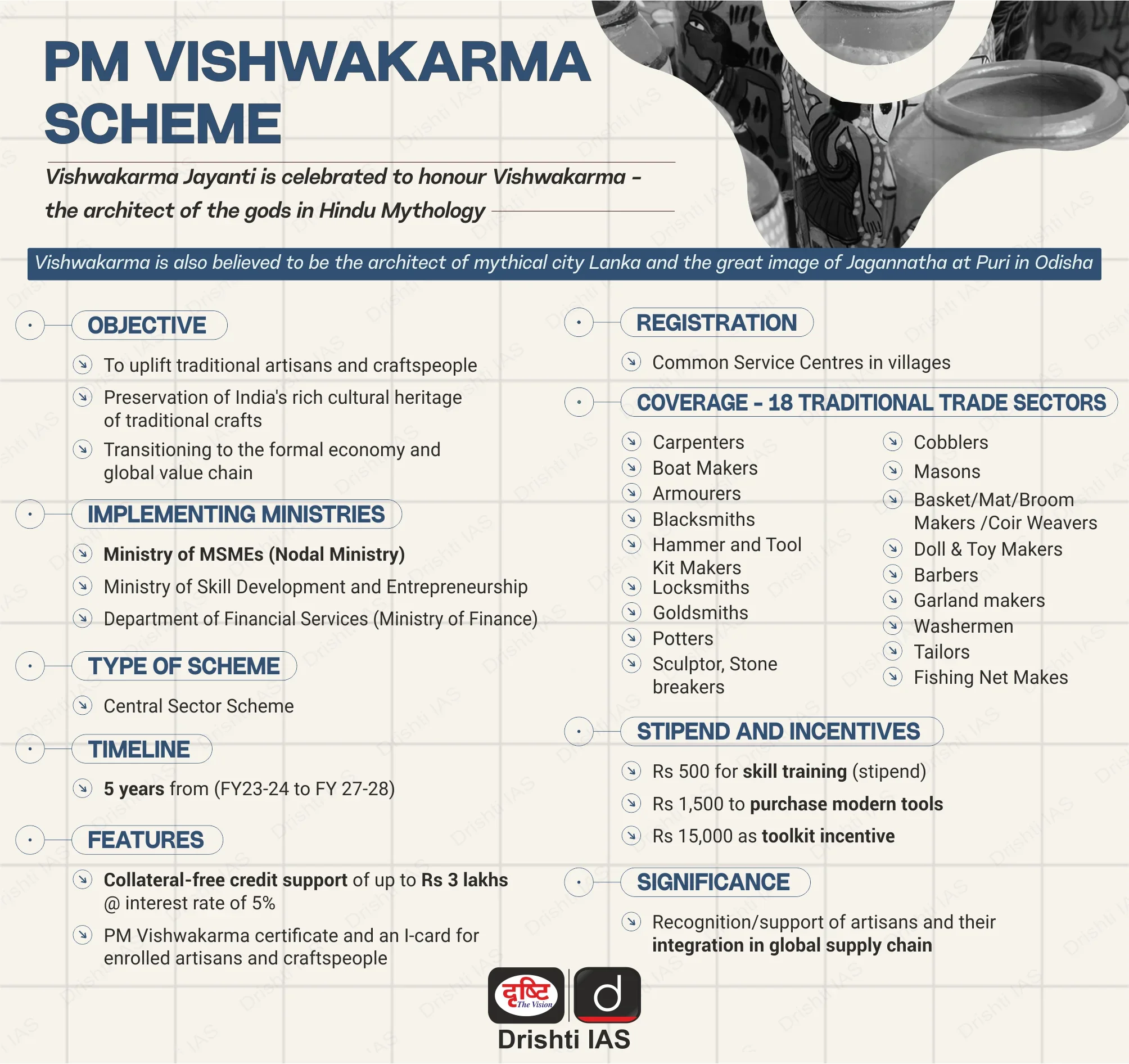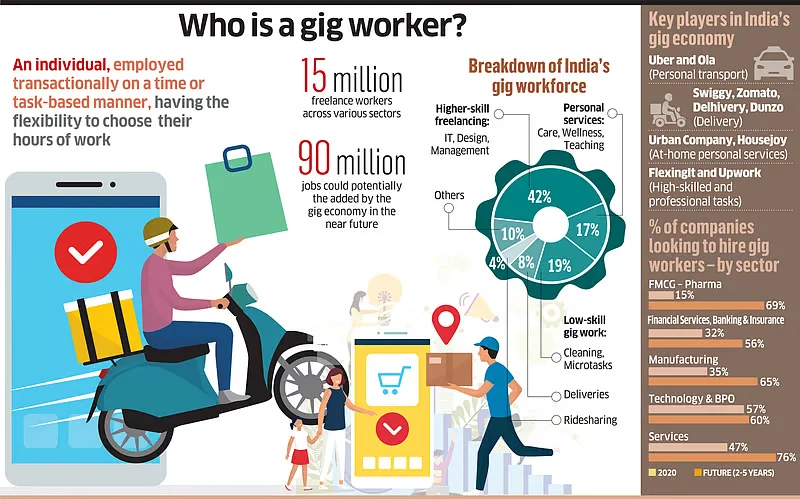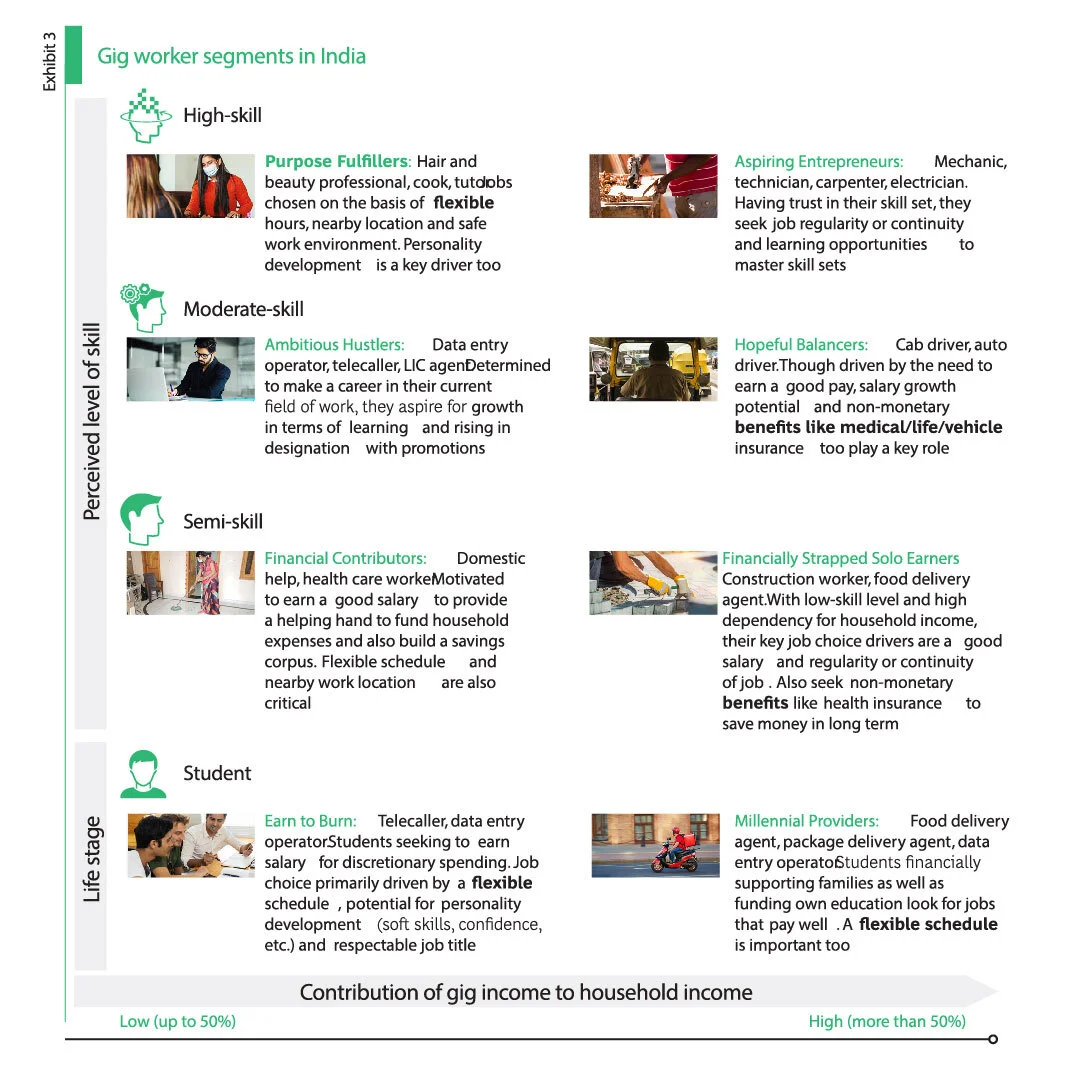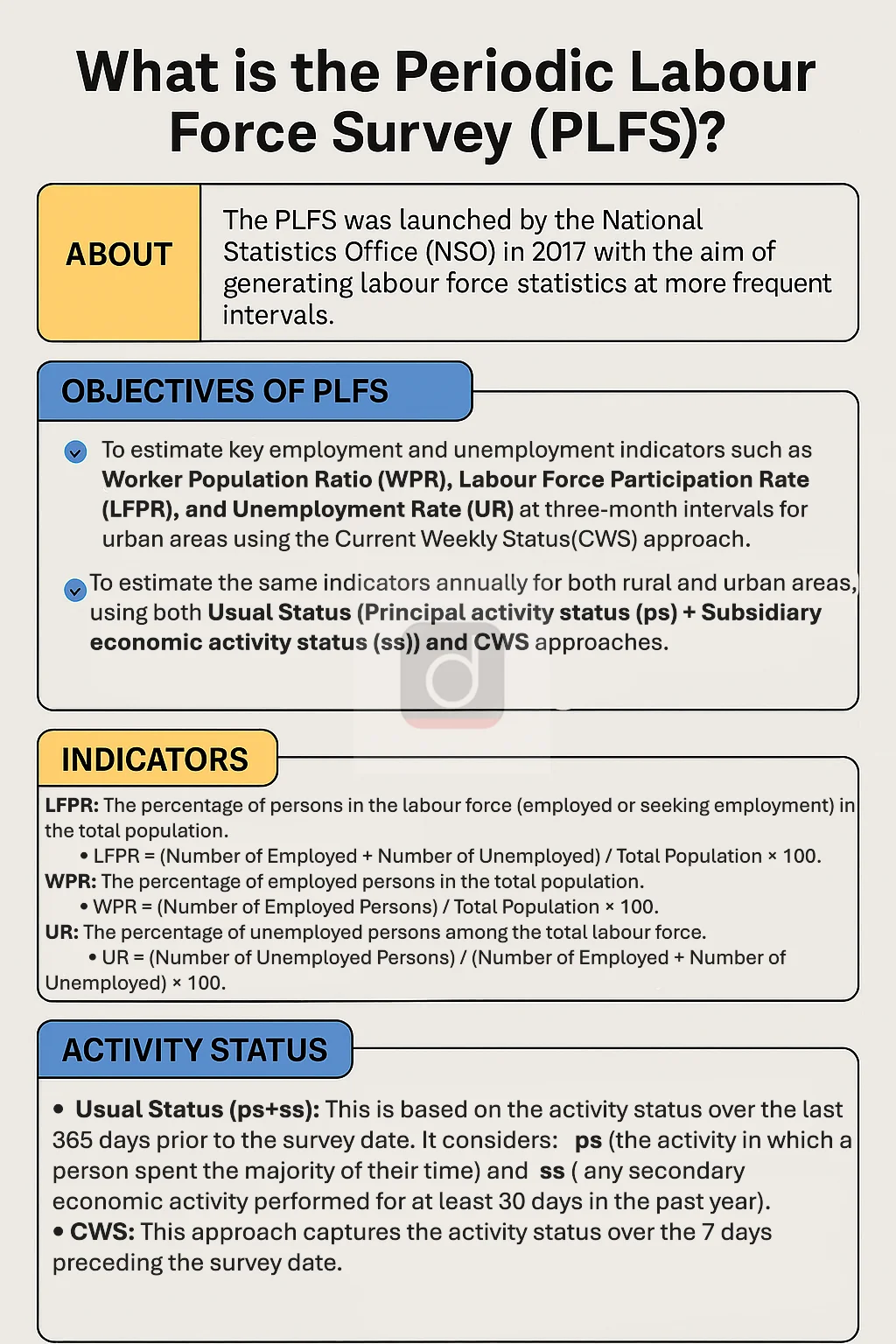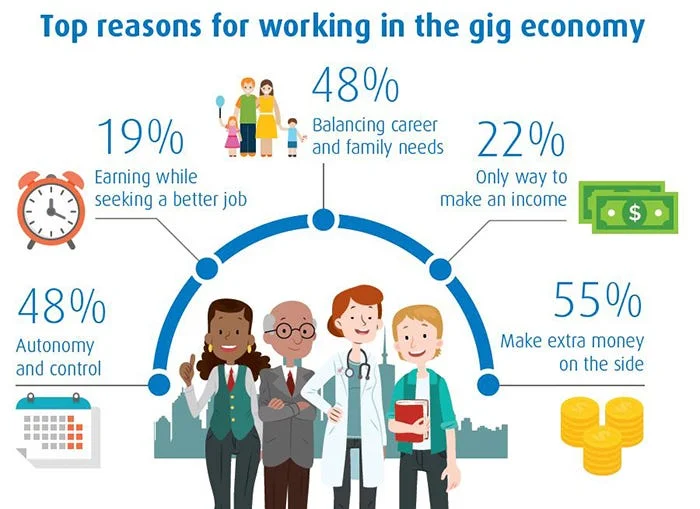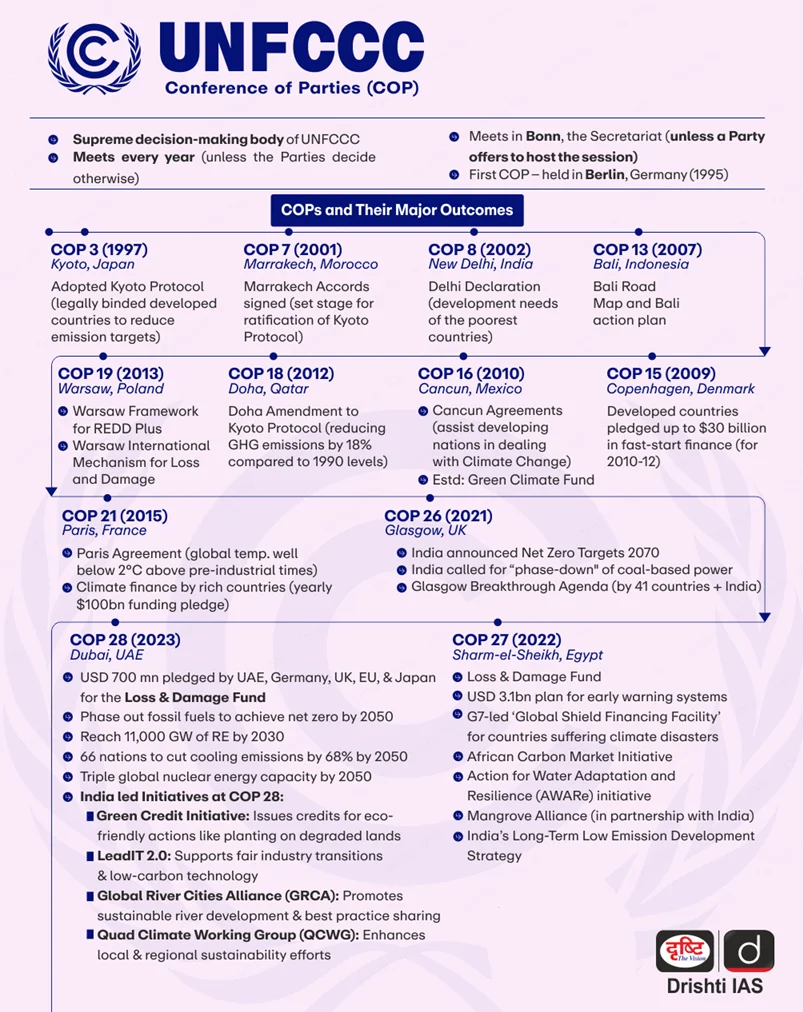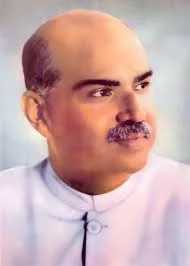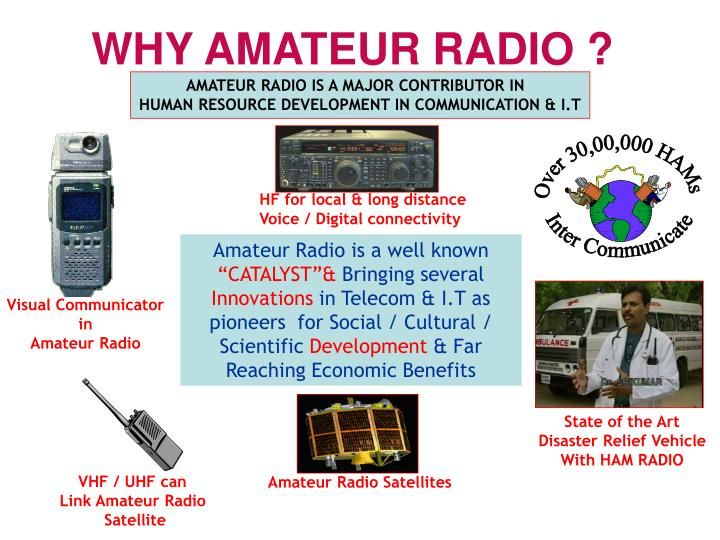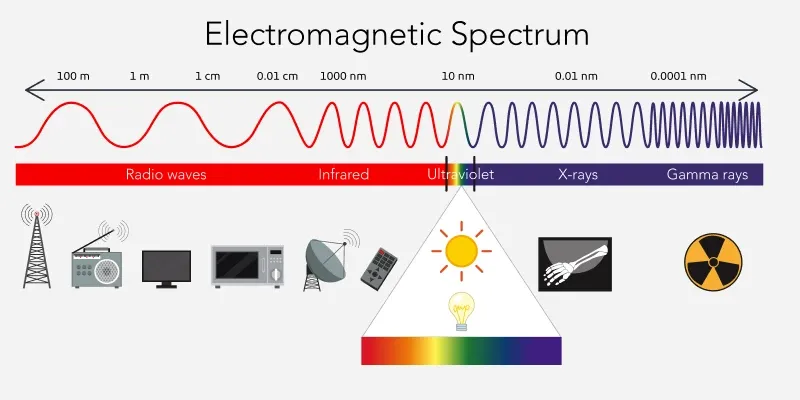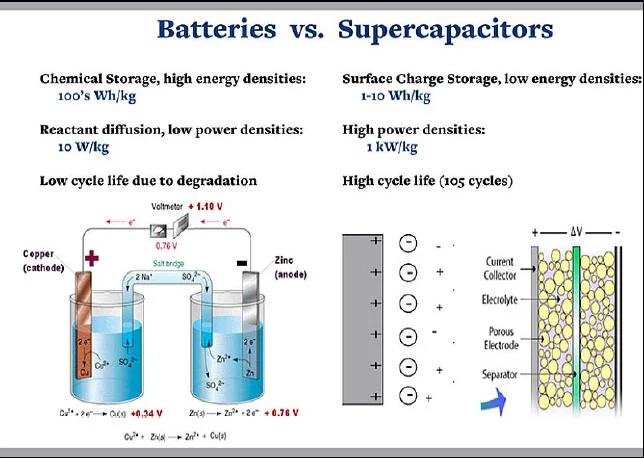India - Trinidad and Tobago Relations
For Prelims: Trinidad and Tobago, Coalition of Disaster Resilient Infrastructure, Global Biofuel Alliance, Most Favoured Nation, CARICOM
For Mains: India’s engagement with the Global South, India - Trinidad and Tobago Relations, Strengthening of India-CARICOM relations, Indentured Labour System and Girmitiyas.
Why in News?
Prime Minister Narendra Modi’s visit to Trinidad and Tobago, marked the first Indian Prime Ministerial visit since 1999.
- During the visit, he was conferred with the country’s highest civilian honour, The Order of the Republic of Trinidad and Tobago, for his global leadership, strong diaspora engagement, and humanitarian efforts during the Covid-19 pandemic.
Trinidad and Tobago
- Geography & Location: Trinidad and Tobago is located in the southeastern West Indies (Caribbean) and comprises two main islands Trinidad and Tobago, along with several smaller islands.
- It lies northeast of Venezuela and northwest of Guyana, separated from Venezuela by the Gulf of Paria and narrow channels.
- Capital: Port of Spain (Trinidad).
- Economic Aspects
- Natural Resources: Oil & gas, asphalt , agriculture (sugarcane)
- Key Economic Activities: Petroleum refining, LNG exports, agriculture, tourism.
- Environment & Biodiversity: Trinidad has rainforests, swamps (Caroni, Nariva), and mangroves
- Notable species: Scarlet Ibis (national bird), manatees, ocelots, caiman, agouti.
- Pitch Lake: World's largest natural reservoir of asphalt deposit (Trinidad).
- Mountain Range: Northern Range, part of the Andes extension.
What are the Key Outcomes of the PM's State Visit to Trinidad and Tobago?
- Cooperation in Disaster Resilient Infrastructure and Biofuels: Trinidad and Tobago agreed to join India’s global initiatives, the Coalition of Disaster Resilient Infrastructure (CDRI) and the Global Biofuel Alliance (GBA).
- Indian Grant Assistance for Quick Impact Projects (QIPs): India will fund up to five projects annually (each ≤ USD 50,000) for grassroots community development.
- This will focus on addressing immediate developmental needs in the country.
- Pharmaceutical Cooperation and Medical Treatment: An MoU was signed to enhance collaboration in the pharmaceutical sector.
- This agreement will improve access to affordable, quality generic medicines from India and enable the provision of medical treatment in India for people in Trinidad and Tobago.
- Diplomatic Training and Capacity Building: An agreement was reached for the training of Trinidad and Tobago diplomats in Indian institutes, as well as by Indian experts.
- This initiative is expected to enhance diplomatic skills and bilateral relations.
- Diaspora Engagement and Support for Education:
- India announced that the Overseas Citizens of India (OCI) card facility would be extended to the 6th generation of Indian diaspora members in Trinidad and Tobago (previously available only to the 4th generation).
- Digital Support: Both sides agreed to collaborate on India Stack solutions such as DigiLocker, and e-Sign.
- Trinidad and Tobago is the first Caribbean nation to adopt the Unified Payments Interface (UPI).
- Support to Agriculture and Healthcare: India gifted the first batch of agro-machinery worth USD 1 million, as agreed under the 2024 MoU, to Trinidad and Tobago’s National Agricultural Marketing and Development Corporation (NAMDEVCO), and extended support for millet cultivation, seaweed-based fertilizers, and natural farming.
- Strengthening Regional Ties and Counterterrorism Cooperation: Both leaders pledged to strengthen counterterrorism cooperation, deepen India-Caribbean Community (CARICOM) ties, and enhance solidarity among Global South nations.
- Cultural Diplomacy: Two Indian Council for Cultural Relations (ICCR) Chairs in Hindi and Indian Studies will be re-established at the University of the West Indies in Trinidad and Tobago.
- India has also extended help to train the Hindu religious priests (Pandits) of Trinidad and Tobago and the Caribbean region.
- This will promote cultural exchange and deepen understanding of Indian languages and culture.
- PM Narendra Modi gifted holy water from the Sarayu River and Mahakumbh, and a replica of the Ram Mandir to Prime Minister of Trinidad and Tobago Kamla Persad-Bissessar, honouring her Bihari roots.
How are India - Trinidad and Tobago Relations Evolved Over Time?
- Historical Ties: India and Trinidad & Tobago share deep-rooted ties dating back to 1845, when the first Indian indentured workers ( mostly Bhojpuri Girmitiyas) arrived aboard the 'Fatel Razack'.
- Their descendants now make up 40–45% of the population, playing a vital role in the country's socio-economic fabric.
- Bilateral relations, formally established in 1962, have remained warm and dynamic.
- Economic and Commercial Relations: India and Trinidad and Tobago signed a Most Favoured Nation (MFN) status trade agreement in 1997, which continues to facilitate trade between the two nations.
- The bilateral trade has shown growth post-pandemic, with major exports from India including pharmaceutical products, vehicles, and iron.
- India’s Exports to Trinidad and Tobago: USD 120.65 million (2024-25)
- India’s Imports from Trinidad and Tobago: USD 220.96 million (2024-25)
- Development Partnership: During the pandemic, a USD 1 million ‘Bringing High and Low Technology (HALT)’ project was implemented in Trinidad & Tobago under the India-UNDP Fund.
- It included 8 mobile healthcare robots, a telemedicine system, hand hygiene stations, and related equipment, and was completed in August 2024.
The Indentured Labour System and the Bhojpuri Girmitiyas
- Indentured labour system: It was introduced post-slavery, involving individuals agreeing to work for a fixed period in return for passage, food, and shelter.
- While presented as a contract system, it was exploitative, with harsh working conditions, poor wages, and restricted mobility.
- Workers often faced penalties for absence, lived under constant surveillance, and endured racial and physical abuse.
- Women, recruited mainly to "balance" the gender ratio, faced gendered discrimination and sexual exploitation.
- Mahatma Gandhi strongly opposed the indentured labour system. In 1917, after a bill for its abolition was rejected, he launched a nationwide agitation and met Viceroy Lord Chelmsford. The system was officially abolished in 1920.
- Girmitiyas: The term Girmitiyas ( derived from ‘agreement’)) refers to Indian indentured labourers who were taken to British colonies like Trinidad and Tobago, Fiji, Mauritius, and Guyana during the 19th and early 20th centuries under the indentured labour system.
- Most of them came from Bhojpuri- and Awadhi-speaking districts such as Chhapra, Ballia, Ara, Banaras, Siwan, Gopalganj, and Azamgarh in present-day Uttar Pradesh and Bihar.
How are India-CARICOM Relations?
- About: Caribbean Community (CARICOM) was established in 1973 through the Treaty of Chaguaramas in Trinidad & Tobago, CARICOM evolved from the Caribbean Free Trade Association (CARIFTA) to promote economic integration and cooperation.
- The CARICOM consists of 15 Member States and 6 Associate Members.
- The 15 members include: Antigua and Barbuda, Bahamas, Barbados, Belize, Dominica, Grenada, Guyana, Haiti, Jamaica, Montserrat, St. Kitts and Nevis, St. Lucia, St. Vincent and the Grenadines, Suriname, and Trinidad & Tobago.
- CARICOM’s Chairmanship rotates every six months among member states. Its Secretariat, based in Georgetown, Guyana, is led by a Secretary-General.
- The CARICOM consists of 15 Member States and 6 Associate Members.
- India-CARICOM Relations:
- Capacity Building and Developmental Assistance: India has provided continuous capacity building and developmental assistance to CARICOM countries.
- India committed USD 14 million grant for Community Development Projects (CDPs), with USD 1 million allocated for each CARICOM country.
- USD 150 million Line of Credit was announced for projects on solar, renewable energy, and climate change.
- Educational and Diplomatic Cooperation: India offers higher education opportunities to students from Caribbean countries through the Indian Technical and Economic Co-operation (ITEC) programme.
- India-CARICOM Summit: The 2nd India-CARICOM Summit was held in 2024 in Georgetown, Guyana.
- The partnership is built on seven key pillars: capacity building, agriculture and food security, renewable energy and climate change, innovation, technology and trade, cricket and culture, ocean economy, and healthcare.
- Capacity Building and Developmental Assistance: India has provided continuous capacity building and developmental assistance to CARICOM countries.
|
Drishti Mains Question: Examine India’s bilateral and cultural relations with Trinidad and Tobago as part of its Global South strategy. Discuss. |
UPSC Civil Services Examination Previous Year’s Questions (PYQs)
Mains
Q. Why indentured labour was taken by the British from India to other colonies? Have they been able to preserve their cultural identity over there? (2018)
Q. Indian Diaspora has an important role to play in South East Asian countries’ economy and society. Appraise the role of Indian Diaspora in South-East Asia in this context. (2017)
Unlocking Cooperatives' Potential in Empowering MSMEs
For Prelims: International Day of Cooperatives, Cooperatives, MSMEs, PM Vishwakarma scheme, Multi-state Cooperative Societies (MSCS), RBI, NABARD, White Revolution, IFFCO, PACS, GST, National Cooperative Policy 2023, MUDRA, CGTMSE, FPOs.
For Mains: Cooperatives and their role in the Indian economy and strengthening of MSMEs, Challenges that hinder effective use of cooperatives in empowering MSMEs in India and way forward.
Why in News?
As India celebrates the International Day of Cooperatives (5th July, 2025) and marks four years of the Ministry of Cooperation, the focus is on harnessing the potential of cooperatives and MSMEs, especially through initiatives like the PM Vishwakarma scheme to empower artisans and promote inclusive economic growth.
How Can Cooperatives Contribute to Boosting the MSME Sector in India?
- Financial Empowerment & Resource Pooling: Cooperatives allow MSMEs to pool financial resources, reducing reliance on high-interest informal loans.
- For example, under the PM Vishwakarma scheme, artisan cooperatives can access credit at lower interest rates (5–7%) compared to individual borrowers.
- Additionally, cooperatives help MSMEs share resources like machinery and raw materials, lowering costs and improving operational efficiency, particularly for small-scale producers.
- Enhanced Market Access: Cooperatives can help MSMEs tap into larger markets through collective marketing, branding, and quality certifications.
- This boosts visibility and competitiveness, allowing smaller businesses to expand their reach and gain access to national and global markets.
- Technology Adoption: Cooperatives can set up cluster-level training centers for skill upgradation (e.g., carpentry, pottery, tailoring) and modern techniques like digital tools and automation.
- Synergy with Government Schemes: Cooperatives can act as an effective delivery mechanism for government schemes like the PM Vishwakarma, ensuring MSMEs, particularly artisans, receive financial, technical, and market support.
- This integration enhances the reach and impact of government initiatives aimed at MSME development.
- Sustainable & Inclusive Growth: MSME cooperatives like Lijjat Papad and SEWA empower women entrepreneurs and support rural empowerment, while waste-sharing and recycling initiatives promote the circular economy.
What are Cooperatives in India?
- About: Cooperatives are people-centred enterprises owned and run by members to fulfill their economic, social, and cultural needs.
- India hosts one of the world's largest cooperative networks, with over 800,000 cooperatives across sectors like agriculture, credit, dairy, housing, and fisheries.
- Evolution of Cooperative Sector in India:
- First Five-Year Plan (1951–56): Emphasized promotion of cooperatives for comprehensive community development.
- Multi-State Co-operative Societies Act, 2002: Provides for the formation and functioning of multi-state cooperative societies (MSCS).
- 97th Constitutional Amendment Act, 2011: Made formation of cooperatives a fundamental right (Article 19).
- Introduced a new Directive Principle (Article 43-B) on cooperative societies.
- Added Part IX-B (Articles 243-ZH to 243-ZT) titled “The Co-operative Societies”.
- Empowered Parliament to enact laws for MSCS and state legislatures for other cooperatives.
- Establishment of the Union Ministry of Cooperation (2021) provides a dedicated policy framework, and empowered grassroots governance under the vision of “Sahakar se Samriddhi”.
- The Multi-State Co-operative Societies (Amendment) Act, 2022 introduced an Election Authority, created a Rehabilitation Fund, and allowed state-level mergers.
- Key Contributions:
- Employment Generation: Cooperatives provide 13.3% of India's direct employment, engaging 29 crore members across 8.14 lakh societies, creating livelihoods in both rural and urban areas.
- Agricultural Development: Cooperatives disburse 15% of short-term agricultural credit, manage 30% of sugar production, and handle 35% of fertilizer distribution
- Financial Inclusion: With 20% of cooperatives in banking, they provide affordable credit to farmers and small businesses, enhancing financial access in remote areas.
- Food Security: Cooperatives like Amul, NAFED, and IFFCO play a pivotal role in milk production, dairy exports, and the distribution of agro-products.
- Women Empowerment: Cooperatives like SEWA and Lijjat Papad empower women, promote self-help groups (SHGs).
Notable Cooperatives in India:
- Primary Agricultural Credit Societies (PACS): Grassroot arms of the short-term cooperative credit structure, linking farmers with Scheduled Commercial Banks, RBI, and NABARD.
- AMUL (Anand Milk Union Limited): A dairy giant and White Revolution pioneer, AMUL is a federation of milk producers in Gujarat that helped make India the world's largest milk producer.
- IFFCO (Indian Farmers Fertiliser Cooperative): One of the world's largest fertiliser cooperatives, IFFCO provides quality fertilisers and agricultural inputs to farmers across India.
- HOPCOMS (Horticultural Producers' Cooperative Marketing and Processing Society): Known for its farm produce outlets, ensuring fair returns to farmers.
- Lijjat Papad (Shri Mahila Griha Udyog Lijjat Papad): A women’s cooperative empowering women through papad production.
| Click Here to Read: What are MSMEs?, Role of MSMEs in India’s Economic Growth?, Recommendations by NITI Aayog on MSMEs. |
What Challenges Limit the Effectiveness of Cooperatives in Empowering MSMEs in India?
- Misconceptions: Many MSME owners perceive cooperatives as government-controlled or political bodies, not as business enablers.
- There is a lack of awareness about various cooperative models like producer cooperatives, credit societies, and marketing federations.
- Weak Financial Support: Cooperative banks often face liquidity crises, limiting MSME lending, while traditional banks hesitate to lend to cooperatives due to perceived risk and lack of credit history.
- Regulatory Complexity: Multiple laws like the Cooperative Societies Act, State Cooperative Laws, and GST compliance create confusion, while excessive bureaucracy delays registration and operational approvals.
- Lack of Digital Adoption: Many cooperatives operate in isolation, missing economies of scale, and low tech adoption (e.g., digital accounting, e-commerce) limits their market reach.
- Governance Deficits: Many cooperatives suffer from poor transparency, accountability, and internal audits, weakening their role as reliable intermediaries for MSMEs.
What Measures are Needed to Strengthen Cooperatives for Empowering MSMEs in India?
- Policy & Regulatory Reforms: Provide tax benefits to MSMEs in cooperatives (e.g., lower GST), prioritize them in public procurement, reduce compliance burdens (e.g., simplified GST filing), and align state laws with the National Cooperative Policy 2023.
- Financial & Credit Support: Expand cooperative banking access by strengthening PACS for non-farm MSMEs, linking cooperatives to MUDRA, CGTMSE, and NABARD, and promote cooperative fintech platforms and digital banking training.
- Infrastructure Upgradation: Adopt digital tools like e-commerce integration (ONDC, GeM), build Common Facility Centers for production, testing, and packaging and logistics cooperatives to to reduce transport costs.
- Market Linkages & Branding: Promote collective branding and certification through “CoopMade” labels and boost e-commerce by linking cooperatives to platforms like Amazon Karigar, and develop export clusters.
- Awareness & Advocacy: Launch national campaigns like “Cooperatives for Atmanirbhar MSMEs” to showcase success stories through media, and drive grassroots mobilization by engaging SHGs, FPOs, and industry associations.
Conclusion
Cooperatives, strengthened by policy reforms, digital adoption, and financial inclusion, can revolutionize MSME empowerment in India. By addressing governance gaps and enhancing market linkages, they can drive inclusive growth, particularly for artisans and women entrepreneurs. The synergy between cooperatives and schemes like PM Vishwakarma can fuel India’s Atmanirbhar Bharat vision.
|
Drishti Mains Question Discuss how cooperatives can play a transformative role in empowering MSMEs in India. |
UPSC Civil Services Examination, Previous Year Question (PYQ)
Prelims
Q. Consider the following statements with reference to India : (2023)
- According to the Micro, Small and Medium Enterprises Development (MSMED) Act, 2006, the ‘medium enterprises’ are those with investments in plant and machinery between `15 crore and `25 crore.
- All bank loans to the Micro, Small and Medium Enterprises qualify under the priority sector.
Which of the statements given above is/are correct?
(a) 1 only
(b) 2 only
(c) Both 1 and 2
(d) Neither 1 nor 2
Ans: (b)
Q. With reference to ‘Urban Cooperative Banks’ in India, consider the following statements: (2021)
- They are supervised and regulated by local boards set up by the State Governments.
- They can issue equity shares and preference shares.
- They were brought under the purview of the Banking Regulation Act, 1949 through an Amendment in 1966.
Which of the statements given above is/are correct?
(a) 1 only
(b) 2 and 3 only
(c) 1 and 3 only
(d) 1, 2 and 3
Ans: (b)
Mains
Q. “In the Indian governance system, the role of non-state actors has been only marginal.” Critically examine this statement. (2016)
Q. “In the villages itself no form of credit organisation will be suitable except the cooperative society.” – All India Rural Credit Survey. Discuss this statement in the background of agricultural finance in India. What constraints and challenges do financial institutions supplying agricultural finance face? How can technology be used to better reach and serve rural clients? (2014)
Bridging the Gaps: Strengthening India's Gig Economy
For Prelims: Periodic Labour Force Survey (PLFS), Gig Workers, NITI Aayog, E-commerce, Artificial Intelligence (AI), Minimum Wage, Code on Social Security, 2020, NITI Aayog Report on India's Gig and Platform Economy (2022),e-Shram Portal,
For Mains: Role of Gig Economy in India’s Economic Growth, Key Issues Associated with the Gig Economy in India.
Why in News?
The Union Budget 2025-26 formally recognised gig and platform workers, extending social protection schemes to them. However, the Periodic Labour Force Survey (PLFS) still lacks a dedicated classification, creating a gap between policy intent and data clarity, which hampers inclusive and effective policymaking.
What is the Gig Economy and What are the Current Gaps in Its Classification?
- About: The gig economy is a labour market based on short-term, flexible, and task-based work, often facilitated by digital platforms.
- As per section 2(35) of Code on Social Security, 2020, a gig worker is “a person who performs work or participates in a work arrangement and earns from such activities outside the traditional employer-employee relationship.”
- They are usually freelancers or independent contractors, paid per task instead of regular wages. Examples include food delivery, ride-hailing, and online freelance services.
- Key Segments:
- Status and Classification Gap: India had 7.7 million gig workers in 2020–21, projected to reach 23.5 million by 2029–30 (NITI Aayog), mostly in medium-skilled jobs.
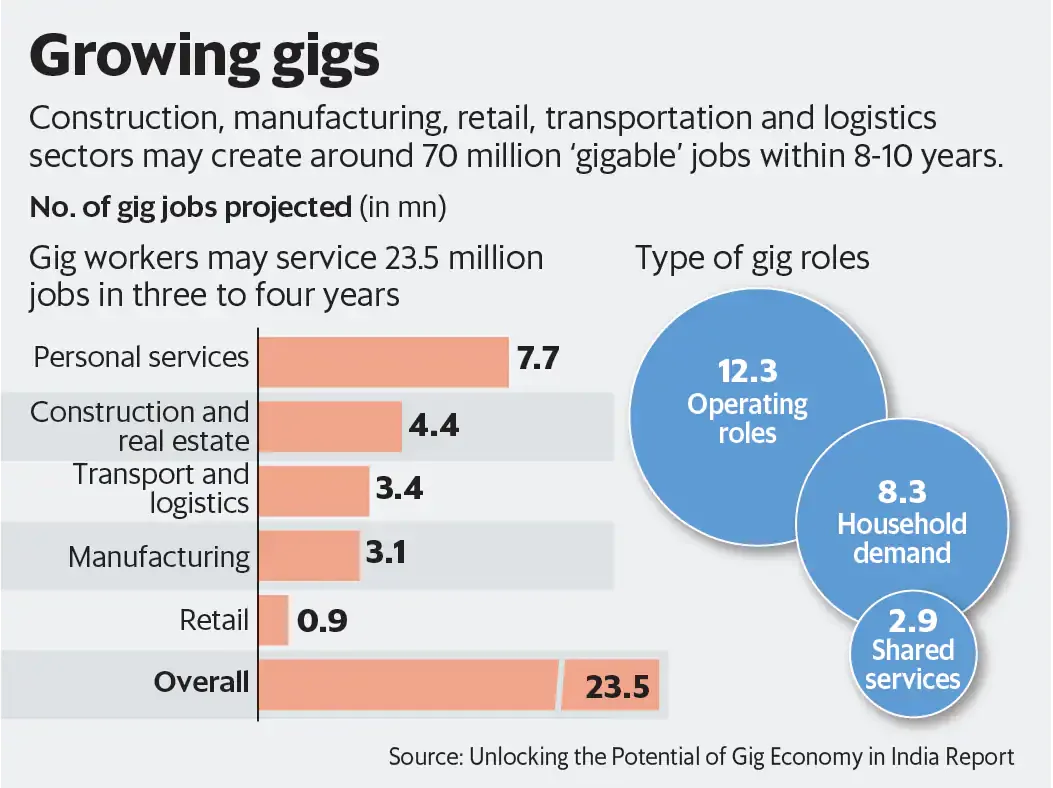
- However, the PLFS does not have a distinct classification for gig workers, grouping them under broad categories like self-employed or casual labour.
- Although gig and platform workers are technically included under "economic activity," their unique work conditions—characterized by algorithmic control, lack of formal contracts, irregular hours, and multi-platform engagement—are not adequately captured.
- This classification gap leads to:
- Exclusion from welfare schemes, as PLFS data guides beneficiary targeting.
- Misrepresentation of employment conditions, masking job insecurity and income volatility.
- Policy blind spots, weakening evidence-based labour reforms.
- Legal ambiguity, affecting enforcement under the Code on Social Security, 2020.
What are the Key Factors Driving the Gig Economy in India?
- Expanding Digital Access: With over 936 million internet and 650 million smartphone users, especially in rural areas, affordable connectivity is enabling more people to join digital platforms for gig work.
- E-Commerce and Startup Growth: The rise of startups and online businesses has increased demand for flexible workers in logistics, content, marketing, and delivery services.
- Consumer Demand for Convenience: Urban consumers increasingly prefer quick services like food delivery and online shopping, creating more gig roles in delivery and support.
- Availability of Low-Cost Labour: High unemployment, surplus of semi-skilled workers, and limited social security push many towards low-paid gig jobs as a livelihood option.
- Changing Work Preferences: Younger workers are drawn to the flexibility, remote work, and work-life balance that gig work offers over traditional jobs.
What is the Significance of the Gig Economy in India’s Economic Growth?
- Informal to Formal Transition: Gig platforms (e.g., Zomato, Swiggy) absorb labour from agriculture and informal sectors, offering structured earnings.
- Festival seasons in 2023 saw 40–50% earning surges, highlighting economic impact and sectoral resilience.
- Inclusive Workforce Participation: The gig economy enhances financial autonomy and social mobility for marginalised groups, especially women and rural workers.
- Around 28% of gig workers are women, many engaged in flexible, home-based services through platforms like UrbanClap, particularly in Tier-II and Tier-III cities.
- Entrepreneurial Ecosystem: Over 80% of gig workers are self-employed, promoting an entrepreneurial mindset through platforms like Uber, fostering innovation in transport, delivery, and freelancing.
- Digital & Economic Growth: The gig economy drives digital adoption through increased use of smartphones, digital payments, and online services. By integrating gig work into the mainstream, it supports tech-led economic growth.
- In 2023, platforms like Blinkit and Swiggy reported a 40–50% surge in earnings during festivals, highlighting gig workers’ role in boosting e-commerce and consumption.
- Tax Revenue and Formalisation: Gig platforms boost India's tax base by formalising payments through digital transactions and enabling the government to tap into previously untaxed economic activity.
- In 2024, the government introduced regulatory frameworks, including e-Shram registration for gig workers, to monitor and organise the sector.
- Their inclusion under social security schemes like Ayushman Bharat PM-JAY further institutionalized the workforce, opening new channels for sectoral expansion and governance.
What are the Major Challenges Facing the Gig Economy in India?
- Absence of Social Security Protections: The Code on Social Security, 2020 recognizes gig workers but fails to guarantee full labor rights, including regulated working hours, minimum wages, and dispute resolution.
- A 2024 NITI Aayog report shows 90% of gig workers lack savings and are vulnerable during emergencies.
- Existing schemes like Ayushman Bharat PM-JAY and e-Shram offer fragmented support,
- PM-JAY covers hospitalization, while e-Shram provides accident insurance but lacks income security, paid leave, or pensions, reflecting a gap in comprehensive social protection.
- Income Instability & Exploitative Conditions: Gig workers in India earn Rs 15,000–Rs 20,000 per month, often below minimum wage.
- Over 70% face financial strain due to platform commissions. The "Prisoners on Wheels" report reveals 78% work over 10 hours daily under algorithmic pressure, causing physical and mental exhaustion.
- Arbitrary Deactivation & Customer Harassment: Sudden account deactivations, reported by 83% of cab drivers and 87% of delivery workers cause income loss and insecurity.
- Additionally, 72% of drivers and 68% of delivery workers face customer misbehaviour, reflecting poor grievance redressal and lack of platform accountability.
India’s Key Initiatives Related to Gig Workers
What Measures Should Be Taken to Address the Gaps in India’s Gig Economy?
- Inclusive Data and Formalization: Update PLFS codes to distinctly capture gig work features like platform dependence and multi-app usage.
- Integrate tech-enabled surveys with the e-Shram database for targeted welfare.
- Expand e-Shram as a unified digital identity linked to pensions, insurance, and sector-wise benefit tracking.
- Legal and Social Security Framework: While the Code on Social Security, 2020 defines gig and platform workers, it lacks provisions for core labour rights like minimum wages, regulated hours, and collective bargaining.
- A strengthened legal framework is needed to ensure portable social security covering insurance, paid leave, and pensions across platforms, promoting continuity and financial stability.
- Grievance Redressal & Worker Protection Mandate transparent redressal systems on platforms and labour authorities must ensure timely resolution and accountability.
- Incentives & State-level Initiatives: Offer tax breaks, subsidies, and tender preferences to platforms complying with social security and fair pay norms, promoting voluntary compliance.
- Encourage state-specific policies like skill development, worker support centers, and affordable housing.
- Rajasthan’s Platform-Based Gig Workers Act is a significant step, other states can learn from the same.
Conclusion
As India moves toward a USD 5 trillion economy, leveraging its digital workforce is crucial. However, the lack of distinct classification for gig and platform workers in PLFS weakens their visibility in policymaking. True recognition demands both legal and statistical representation. Strengthening data systems alongside protective legislation is essential to ensure inclusive and equitable labour and social welfare policies for India’s evolving workforce.
|
Drishti Mains Question: Examine the key challenges faced by gig and platform workers in India. Suggest policy measures to strengthen their welfare and ensure labour protection. |
UPSC Previous Year Questions
Prelims
Q. With reference to casual workers employed in India, consider the following statements: (2021)
- All casual workers are entitled for Employees Provident Fund coverage.
- All casual workers are entitled for regular working hours and overtime payment.
- The government can by a notification specify that an establishment or industry shall pay wages only through its bank account.
Which of the above statements are correct?
(a) 1 and 2 only
(b) 2 and 3 only
(c) 1 and 3 only
(d) 1, 2 and 3
Ans: B
Mains
Q. Examine the role of ‘Gig Economy’ in the process of empowerment of women in India. (2021)
Bonn Climate Change Conference 2025
Why in News?
The 62nd annual session of the Bonn Climate Change Conference was held in Bonn, Germany. This mid-year meeting sets the stage for key climate negotiations ahead of the 30th Conference of the Parties to the United Nations Framework Convention on Climate Change (UNFCCC) in Belem, Brazil.
What is the Bonn Climate Change Conference?
- About: The Bonn Climate Change Conference is a mid-year summit held under the UNFCCC, the 1992 treaty guiding global climate negotiations.
- Formally called the Sessions of the Subsidiary Bodies (SBs), it is one of the two regular UNFCCC climate meetings alongside COP.
- It brings together SB members and committees, Indigenous groups, international organisations, scientists, and civil society to review implementation, hold technical discussions, and set the agenda for the upcoming COP summit.
- Key Players:
- Subsidiary Body for Implementation (SBI) of UNFCCC: Reviews implementation, facilitates technical and financial support, especially for developing nations.
- Subsidiary Body for Scientific and Technological Advice (SBSTA) of UNFCCC: Provides scientific inputs from UN Intergovernmental Panel on Climate Change (IPCC) to negotiators and policymakers.
What are the Key Takeaways from the Bonn Conference 2025?
- Global Goal on Adaptation (GGA): Progress was made on refining indicators for the GGA, but disagreements over finance and Means of Implementation (MoI) delayed consensus. A draft list of 100 indicators is expected at COP30.
- The GGA, first outlined in the Paris Agreement (2015), aims to enhance adaptive capacity and climate resilience. However, it lacked concrete action until COP28 in Dubai, where a framework to define and implement the GGA was finally adopted.
- Just Transition Work Programme (JTWP): Bonn saw significant movement on the JTWP, negotiators agreed to establish a Belém Action Mechanism to share fair transition strategies.
- The JTWP is a UNFCCC initiative launched at COP27 (2022) through the Sharm el Sheikh Implementation Plan.
- It aims to ensure that climate actions under the Paris Agreement are just, equitable, and aligned with national development goals considering social, economic, and workforce impact and is specifically aimed at supporting workers and communities affected by the shift away from fossil fuels.
- The JTWP is a UNFCCC initiative launched at COP27 (2022) through the Sharm el Sheikh Implementation Plan.
- National Climate Plans: Most countries missed the February 2025 deadline for submitting updated Nationally Determined Contributions (NDCs), slowing efforts to limit global warming to 1.5°C.
- Brazil urged nations to submit stronger NDCs by September 2025 to align with the 1.5°C target. However, the current submissions remain insufficient, possibly pushing warming closer to 2°C.
- Climate Finance: Disputes over climate finance were intense, with developing nations (India) pressing for the fulfillment of pledges, including the mobilization of USD 1.3 trillion every year till 2030
- Wealthier countries suggested private finance as a solution, but critics argued that public grants were essential.
- Developing countries prefer a finance-centric dialogue and emphasize inclusion of Article 9.1 of the Paris Agreement (obligation of developed countries to provide financial support).
- According to the Climate Policy Initiative (an advisory organization), global climate finance must rise to around USD 9 trillion annually by 2030 to keep global temperature increases within the targets set by the Paris Agreement.
- Loss and Damage: The conference noted that the Loss and Damage Fund remains underfunded, with only USD 768 million pledged, far from the USD 1 trillion needed.
- Despite the pledges, governments have so far signed contribution agreements for USD 495 million and have paid in only USD 321 million.
Nationally Determined Contributions
- About: NDCs are country-specific climate action plans to cut emissions and adapt to climate change under the Paris Agreement, updated every five years.
- The existing NDCs, submitted in 2020, pertain to the 2030 period, with 2035 submissions by February 2025. The 2035 NDC must build on the 2030 targets, but countries set their own progression based on resources.
- India and NDCs: India submitted its first NDC in 2015, targeting a 33–35% reduction in emission intensity of GDP and 40% non-fossil fuel-based power capacity by 2030. Both targets were achieved ahead of schedule—by October 2023, non-fossil fuel capacity reached 43.81%, and emission intensity had reduced by 33% by 2019.
- In August 2022, India updated its NDCs, targeting a 45% reduction in emission intensity of GDP, 50% non-fossil fuel power capacity, and an additional 2.5–3 billion tonnes of carbon sink through forest and tree cover by 2030.
- According to India’s 4th Biennial Update Report (BUR-4) (2024), emission intensity had reduced by 36%, non-fossil fuel capacity reached 47.10% by December 2024, and 2.29 billion tonnes of carbon sink had been created.
| Read more: UNFCCC COP29 Baku |
|
Drishti Mains Question: Discuss the role of international climate negotiations like the Bonn Climate Change Conference in strengthening global environmental governance. |
UPSC Civil Services Examination Previous Year Question (PYQ)
Prelims:
Q. With reference to the Agreement at the UNFCCC Meeting in Paris in 2015, which of the following statements is/are correct? (2016)
- The Agreement was signed by all the member countries of the UN, and it will go into effect in 2017.
- The Agreement aims to limit the greenhouse gas emissions so that the rise in average global temperature by the end of this century does not exceed 2ºC or even 1.5ºC above pre-industrial levels.
- Developed countries acknowledged their historical responsibility in global warming and committed to donate $ 1000 billion a year from 2020 to help developing countries to cope with climate change.
Select the correct answer using the code given below:
(a) 1 and 3 only
(b) 2 only
(c) 2 and 3 only
(d) 1, 2 and 3
Ans: B
Mains:
Q. Describe the major outcomes of the 26th session of the Conference of the Parties (COP) to the United Nations Framework Convention on Climate Change (UNFCCC). What are the commitments made by India in this conference? (2021)
Q. Explain the purpose of the Green Grid Initiative launched at the World Leaders Summit of the COP26 UN Climate Change Conference in Glasgow in November 2021. When was this idea first floated in the International Solar Alliance (ISA)? (2021)
National Commission for Minorities
Why in News?
The National Commission for Minorities (NCM) has been functioning without a Chairperson and several members since April 2025, following the retirement of its previous leadership.
What is the National Commission for Minorities?
- About: It is a statutory body established under the National Commission for Minorities Act, 1992, with the vision to safeguard and protect the interests of minority communities.
- The first statutory Commission was constituted on 17th May 1993.
- Genesis: The Minorities Commission (MC) was established in 1978 through a Ministry of Home Affairs Resolution and was moved to the newly created Ministry of Welfare in 1984.
- In 1988, the Ministry of Welfare excluded linguistic minorities from the Commission’s jurisdiction.
- Composition: It consists of a Chairperson, a Vice-Chairperson, and five Members, all nominated by the Central Government but absence of a full body has led to concerns over inefficiency.
- Each member must belong to one of the six notified minority communities: Muslim, Christian, Sikh, Buddhist, Parsi, and Jain.
- Powers and Tenure: It has quasi-judicial powers and each member serves a three-year term from the date they assume office.
- Removal: The Central Government may remove the Chairperson or any Member of the NCM if they:
- Are adjudged insolvent,
- Take up paid employment outside their duties,
- Refuse or become incapable of acting,
- Are declared of unsound mind by a court,
- Abuse their office, or
- Are convicted of an offence involving moral turpitude.
Who are Minorities in India and what are their Constitutional Safeguards?
- About Minorities: The Constitution of India does not provide a definition for the term ‘Minority’, but the Constitution recognises religious and linguistic minorities.
- The NCM Act, 1992 defines a minority as “a community notified as such by the Central government.
- Minority Communities: As per a 1993 notification by the Ministry of Welfare, the Government of India initially recognized five religious communities—Muslims, Christians, Sikhs, Buddhists, and Zoroastrians (Parsis)—as minority communities.
- Later, in 2014, Jains were also notified as a minority community.
- Minorities Population: According to the 2001 Census, these six communities together constitute 18.80% of India’s population.

- While the 2011 Census does not mention the Parsi population, it is estimated at around 57,000.
- Safeguards Related to Minorities:
- Article 29: Right of any section of citizens to conserve their distinct language, script, or culture.
- Article 30: Right of minorities to establish and administer educational institutions.
- Article 347: Special provision relating to the language spoken by a section of the population of any State.
- Article 350-A: Provision for facilities for instruction in mother-tongue at the primary stage.
- Article 350-B: Provision for a Special Officer for Linguistic Minorities and his duties.
UPSC Civil Services Examination Previous Year Questions (PYQ)
Prelims
Q. What was the exact constitutional status of India on 26th January, 1950? (2021)
(a) A Democratic Republic
(b) A Sovereign Democratic Republic
(c) A Sovereign Secular Democratic Republic
(d) A Sovereign Socialist Secular Democratic Republic
Ans: (b)
Q. The Preamble to the Constitution of India is (2020)
(a) a part of the Constitution but has no legal effect
(b) not a part of the Constitution and has no legal effect either
(c) a part of the Constitution and has the same legal effect as any other part
(d) a part of the Constitution but has no legal effect independently of other parts
Ans: (d)
Birth Anniversary of Dr. Syama Prasad Mookerjee
Prime Minister Narendra Modi paid tribute to Dr. Syama Prasad Mookerjee on his birth anniversary (6th July) highlighting his legacy in national unity, industrial policy, and education, and his relevance in India’s modern development.
- Birth and Early Life: Born in Calcutta (now Kolkata). Dr. Mookerjee is the son of Sir Ashutosh Mookerjee, a renowned educationist and Vice-Chancellor of Calcutta University.
- Academic Excellence: Dr. Mookerjee represented Calcutta University at the Conference of the Universities of the British Empire in England.
- Dr. Mookerjee became the youngest Vice-Chancellor of Calcutta University at the age of 33 in 1934.
- He started "Bang Wani", a Bengali journal, in 1922 and The Nationalist in the 1940s.
- Political Career: In the 1920s, Dr. Mookerjee joined the Indian National Congress but resigned later over ideological differences with the leadership. He later joined the Hindu Mahasabha and played a key role in forming a Progressive Coalition government in Bengal in 1937, where he served as the Finance Minister.
- Became the acting President of the Hindu Mahasabha in 1940 and advocated for complete independence for India.
- He founded the All India Bharatiya Jan Sangh in 1951, which later evolved into the Bharatiya Janata Party.
- Post-Independence Role: Dr. Mookerjee served as Minister for Industry and Supply in the Interim Government after independence.
- Instrumental in establishing key institutions like the Chittaranjan Locomotive Factory, Sindri Fertilizer Corporation, and Hindustan Fertilizer Corporation.
- Ideological Stance: He advocated nationalism, Hindu cultural identity, and a united India. He opposed Article 370, asserting that one nation cannot have two constitutions, heads, or flags.
- Opposed the linguistic division of India, advocating for unity based on administrative efficiency, security, and economic prosperity.
- He was arrested during a protest against J&K’s special status and died under mysterious circumstances in 1953.
- Legacy: He is known as "The Lion of Parliament" for his sharp debates on national issues.
| Read more: Dr. Shyama Prasad Mukherjee |
Ham Radio & Life on the International Space Station
Indian astronaut Shubhanshu Shukla, aboard the International Space Station (ISS) as part of the Axiom-4 mission, communicated with Earth using ham radio communication, marking a unique instance of space-to-Earth communication.
Ham Radio
- Ham radio (amateur radio), is a licensed, non-commercial radio communication service used for education, experimentation, and emergency communication.
- Operators use radio waves, transceivers and antennas to establish contact locally, globally, and even from space.
- It was first used in space in 1983 for communication between astronauts and Earth.
- The ISS features the ARISS (Amateur Radio on the ISS) system supported by the US, Russia, Canada, Japan, and Europe.
- In India, individuals above 12 years of age can obtain a ham radio license from the Ministry of Electronics and Information Technology.
- In India, ham radio played a crucial role in facilitating emergency communications during the Indian Ocean tsunami (2004), the Uttarakhand floods (2013), and various other disasters.
Radio waves:
- Discovered by Heinrich Hertz, they are long-wavelength electromagnetic waves used in communication systems.
- They propagate via line-of-sight, ionospheric reflection, or satellite relay, enabling long-distance transmission and forming a core part of wireless communication technology.
Life on the ISS:
- In microgravity, astronauts consume dehydrated, packaged food rehydrated with hot water to avoid floating crumbs that may damage equipment.
- Meals are secured using Velcro trays, and utensils are cleaned without water using wipes.
- High calcium, low sodium, and vitamin D intake is recommended to maintain bone health during extended space missions.
| Read More: Cyclone Shelter HAMs Excel in IOTA Expedition |
Low-Cost Sensor to Detect Toxic Sulfur Dioxide
Scientists at the Centre for Nano and Soft Matter Sciences (CeNS), Bengaluru, have developed a low-cost, highly sensitive sensor capable of detecting sulfur dioxide (SO₂) at extremely low concentrations.
- Scientists fabricated a sensor combining nickel oxide (NiO) and neodymium nickelate (NdNiO₃). NiO acts as a gas receptor, and NdNiO₃ functions as a transducer, transmitting detection signals.
- It can detect SO₂ concentrations as low as 320 Parts per billion (ppb), surpassing many commercial sensors.
- The sensor offers real-time SO₂ detection with a user-friendly threshold alert system (green: safe, yellow: warning), making it ideal for public health use in industrial and urban spaces.
- Sulfur dioxide (SO₂): It is a colorless, water-soluble toxic gas primarily emitted from vehicles and industrial activities. Even minute exposure can cause respiratory issues, including asthma attacks and long-term lung damage.
| Read more: Particulate Matter & SO2 Control |
High-Efficiency Material for Next-Gen Energy Storage
Centre for Nano and Soft Matter Sciences (CeNS), Bengaluru & Aligarh Muslim University (AMU) have developed a lanthanum-doped silver niobate-based energy storage material, which has enhanced the performance of supercapacitors.
Lanthanum-Doped Silver Niobate Energy Storage Material:
- About: It is an advanced nanostructured compound made by doping silver niobate (AgNbO₃), a lead-free and eco-friendly perovskite material, with lanthanum, a rare-earth element.
- Significance:
- This doping has reduced nanoparticle size, increasing the surface area for energy storage, and improved electrical conductivity for faster charge-discharge cycles.
- It also ensured excellent energy retention (118%) with no energy loss during use (100% coulombic efficiency).
- It is also environmentally friendly, being lead-free and suitable for green energy applications.
- Applications: Used in portable electronics, electric vehicles (EVs), and renewable energy systems, demonstrated potential by successfully powering an LCD display through a prototype supercapacitor.
Supercapacitors:
- Supercapacitors, also known as ultracapacitors, are energy storage devices that bridge the gap between conventional capacitors and batteries.
- They offer high power density, rapid charge-discharge, and a long lifecycle (millions of cycles).
- Unlike batteries, they store energy through electrostatic charge separation rather than chemical reactions, making them safer and more durable.
- They have lower energy density than batteries, but this can be improved through material doping, such as with lanthanum-doped silver niobate.
| Read More: Paper-based Supercapacitor for Rapid Device Charging |
SEBI Bans Jane Street
US-based Jane Street, a prominent proprietary trading firm, has been banned by Securities and Exchange Board of India (SEBI) for engaging in manipulative trading practices that disrupted market integrity and resulted in massive illegal profits.
- Manipulative Trading: Jane Street executed trades in the derivatives (futures) segment not to profit from market trends, but to manipulate prices.
- They used a "marking the close" strategy, placing large buy orders to inflate prices, then selling them later to maximize gains, employing a push-pull tactic.
- This intra-day manipulation misled small investors and created artificial volatility in the market.
- Jane Street used its Indian arm, JSI Investments Pvt Ltd, to bypass local regulations because foreign portfolio investors (FPIs) are restricted from engaging in certain cash market activities, such as intraday trading (purchasing and selling securities listed in a stock exchange on the same day).
- Using a domestic entity allowed the group to execute trades that would otherwise be prohibited under FPI norms.
- SEBI’s Regulatory Actions: SEBI imposed a Rs 4,843 crore penalty on Jane Street and barred it from accessing the Indian securities market.
- Impact on Proprietary Trading: The case has highlighted the need for stronger compliance and market safeguards.
- SEBI: SEBI is the statutory regulator of India’s securities market under the Ministry of Finance, established under the SEBI Act, 1992. It aims to protect investor interests, promote fair practices, and regulate the securities market.
- Headquartered in Mumbai, it has regional offices in Ahmedabad, Kolkata, Chennai, and Delhi. Initially set up in 1988 as a non-statutory body, it gained statutory powers in 1992.
- SEBI is a quasi-legislative and quasi-judicial body with powers to frame regulations, conduct inquiries, and impose penalties.
- It regulates issuers by prohibiting insider trading and inspecting market entities.
| Read more: Stock Market Regulation |

